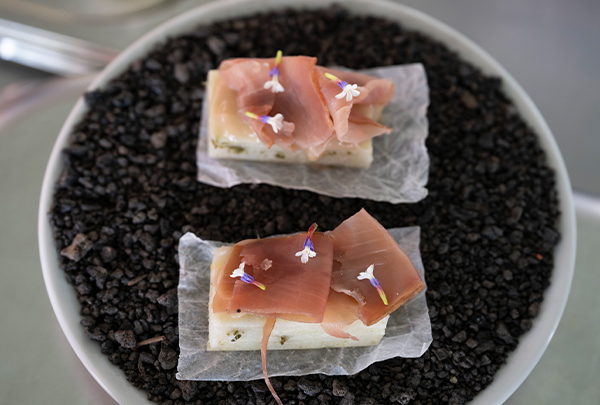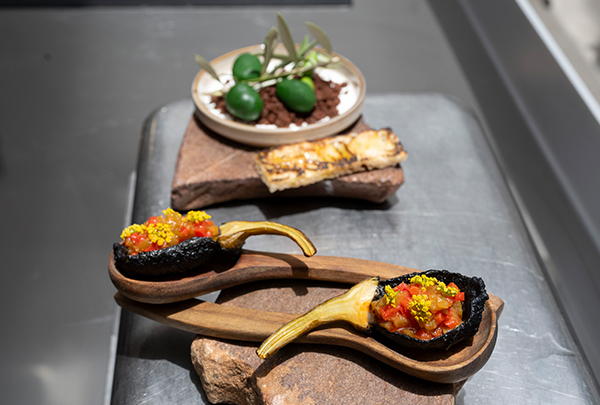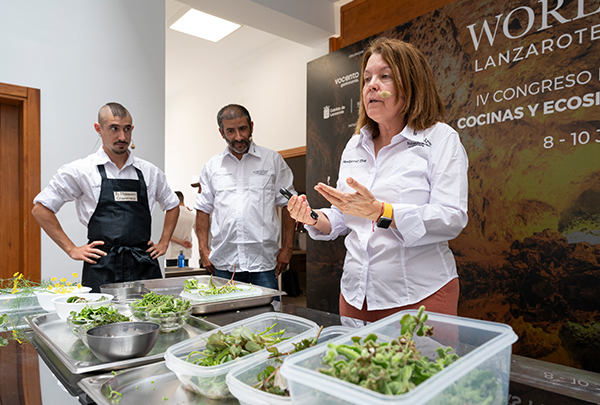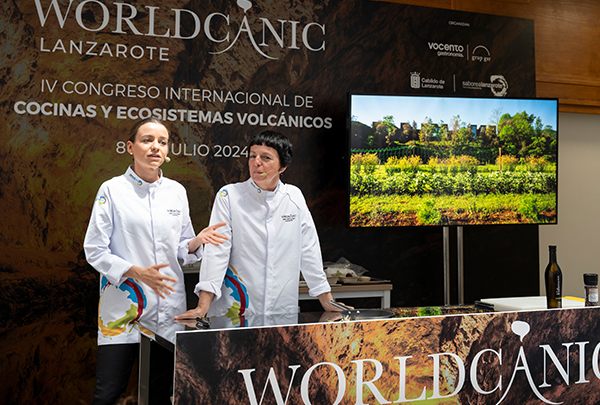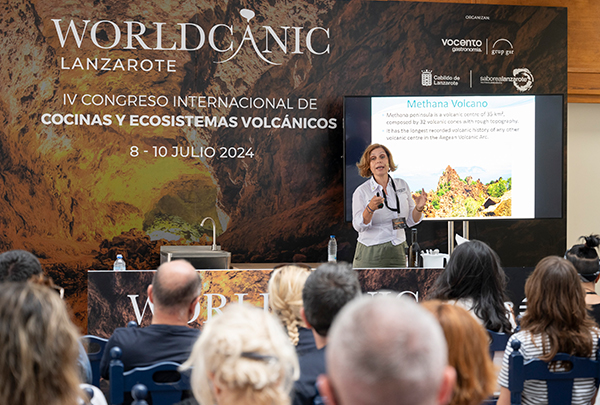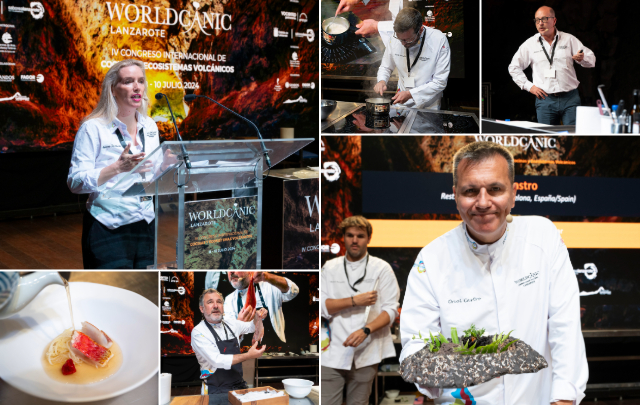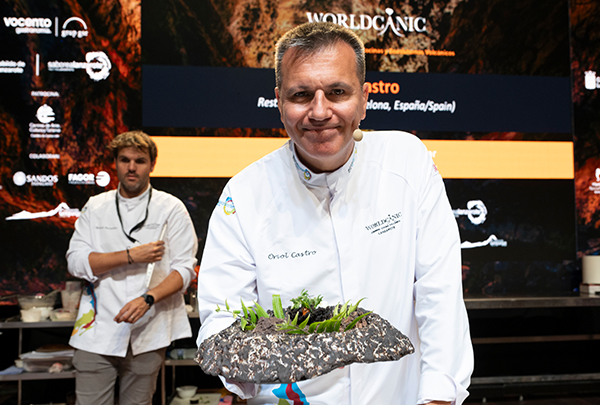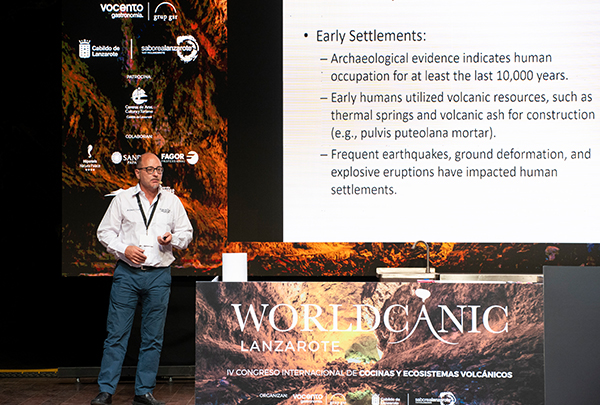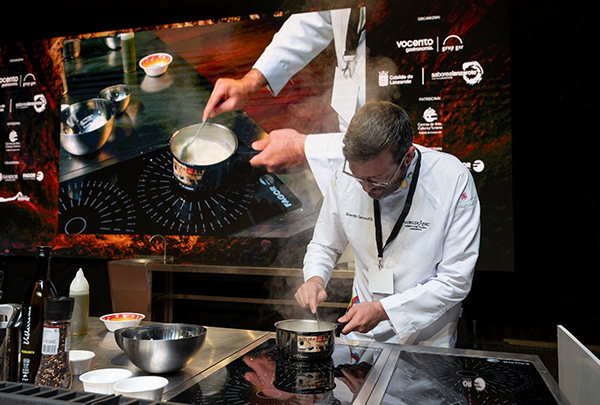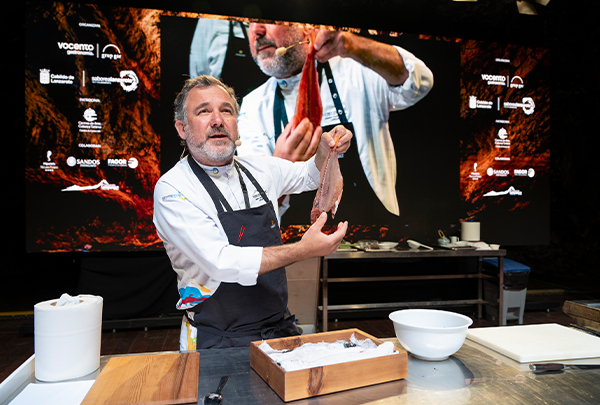News
Scientists and chefs bring the diversity and potential of volcanic flowers and herbs to Worldcanic
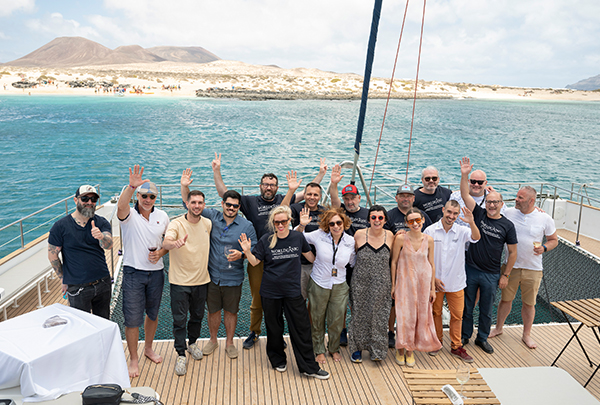
Biologists Juan Cazorla and Kike Gallardo, who is also a chef, are promoting the use of wild herbs that grow in fertile volcanic soils for their uniqueness and multiple benefits
The island of La Graciosa, officially the eighth island of the Canary Islands from 2018, was the setting for the second day of the fourth edition of Worldcanic, the congress on volcanic cuisine and ecosystems. An exceptional setting in which the congress linked up with the volcanic earth and its products. Even the most humble, such as wild herbs, were the protagonists of the day's round table discussion with the participation of Kike Gallardo, biologist and chef in charge of the El Herbario Comestible project, Juan Carlos Godoy, technician at the Office of the Biosphere Reserve of the Cabildo of Lanzarote, and Montserrat Rodríguez Mesa, biologist at the Lanzarote Geopark.
The three of them highlighted the exceptional characteristics of the volcanic soils, which are very fertile due to the abundance of minerals and with a high presence of rofe and jable (fruits of volcanic activity that are very abundant in Lanzarote), which reduce water evaporation and facilitate filtration. These soils are home to plants that "we sometimes call weeds out of sheer ignorance", warned Kike Gallardo. The biologist and chef encouraged chefs to "get to know them and use them in their dishes, not only to make better use of natural resources but also to raise awareness of the environment". Cazorla reinforced the message by listing the many varieties of native and exotic species that can be found on the island of Lanzarote, for example. This is the case of the purslane, rich in omega 3; the lechuguilla, very similar to the cardoon; the quemón, whose pods taste like mustard with a spicy touch; the vinagreras, with its sour and vinegary taste; or the tunera, a truly versatile plant.
Cooking with a volcanic conscience
The chefs taking part in today's session are already making the most of the natural resources that volcanic areas have to offer. This is the case of Fina Puigdevall and Martina Puigvert, mother and daughter who run the kitchens at Les Cols** (Olot), in the heart of the volcanic area of La Garrotxa. Their passion for their land means that they take great care and respect for the local varieties, such as buckwheat, which they grind in their own mill and use in all its forms, from grain for mock rice to flour, flower or drink. The same goes for the Santa Pau bean, which they use to make "a very volcanic dish that also includes pig's trotters, turnips and vegetable bacon", or the local onion, "sweeter because it is volcanic", which they use to make a delicate onion royal, served with olot cake, breadcrumbs and liquorice. Another important ingredient is elderflower, with which they enrich many dishes and even make a mild sparkling wine.
Another champion of local and regional products is the La Mancha chef Miguel Ángel Expósito, who, in his restaurant Retama* (Ciudad Real), offers a proposal based on traditional recipes that he revives with passion and modernity. As the chef explained to the delegates at the congress, the volcanic soil of Ciudad Real, although ancient and extinct, has many advantages for growing crops, such as the unique wines and oils that have recently been awarded the Campo de Calatrava Denomination of Origin. "There are a total of 16 municipalities spread over an area of around 5,000m2, populated by around 240 volcanic buildings, surrounded by lagoons and with extreme temperatures, which conditions its fauna and flora. It is home to the Iberian lynx and wild boar, golden eagles, black storks, black vultures, red-legged partridges, ducks and plants such as black garlic, large gladiolas, mauve geraniums and yellow saffron.
The scientific note of the day was given by Maria Manousaki, a geologist and civil servant at the OASP Earthquake Planning and Protection Organisation (Athens, Greece). The Greek researcher, who reviewed the 40 million years of activity of the Greek volcanic arc, stressed the importance of prevention. "It is important to be prepared," warned Manousaki, who explained that, for this reason, and after a sharp increase in seismic activity was detected in 2011 following an eruption in the Santorini area, a scientific committee was set up in her country whose main task is to "monitor volcanoes in order to draw up effective plans for protection and action in the event of an emergency". Although the volcano is now dormant, "we can't go to sleep," the geologist recalls.

